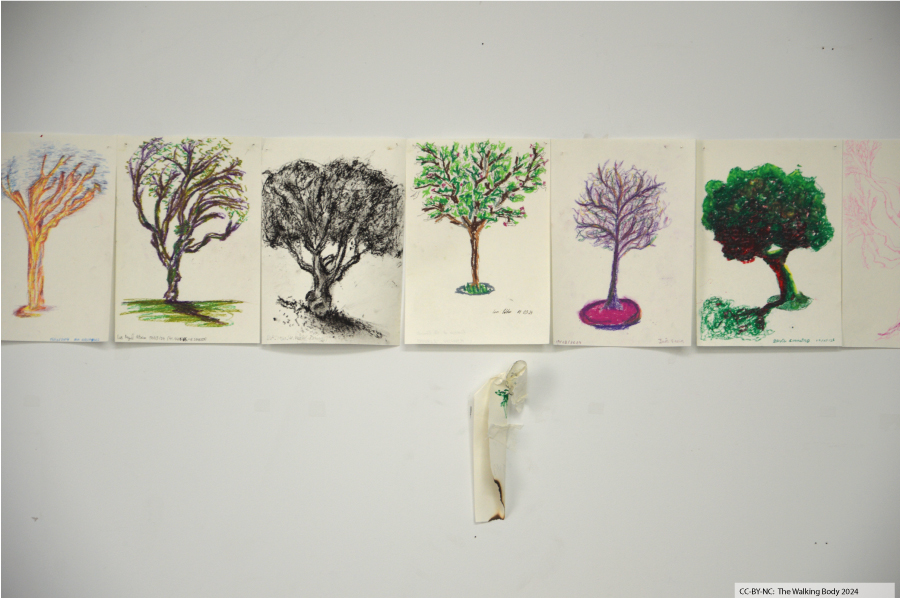Representation can be a tool for desire, encounter or recognition. In this workshop, participants are invited to think of a tree they would like to plant in Guimarães. Where would that tree live? Why is this tree important? What do we need a tree for? What does it look like?
I invite everyone to come and draw their tree and tell us where it should be and what its place is in our landscape. We’ve got paper and pencils and we’re willing to give you as much time as you need. If you have the time or the interest, I’d like to record your story in a short testimonial.
At the end of the workshop we intend to create an online map with all the drawings and testimonies collected so that we can build a community landscape with all our trees.

Walking Arts & Local Communities (WALC) is an artistic cooperation project, co-funded by the European Union, Creative Europe, starting in January 2024 for four years. With seven partners from five countries, WALC establishes an International Center for Artistic Research and Practice of Walking Arts, in Prespa, Greece, at the border with Albania and North Macedonia, backed up by an online counterpart in the format of a digital platform for walking arts.
WALC builds on the previous work of hundreds of artists and researchers already practicing Walking Arts as a collaborative medium, and having met at the significant previous walking arts events and encounters in Greece, Portugal, Spain, France, Belgium, and during online activities at walk · listen · create.

We acknowledge the support of the EU Creative Europe Cooperation grant program in the framework of the European project WALC (Walking Arts and Local Community).
Funded by the European Union. Views and opinions expressed are however those of the author(s) only and do not necessarily reflect those of the European Union or the European Education and Culture Executive Agency (EACEA). Neither the European Union nor EACEA can be held responsible for them.




